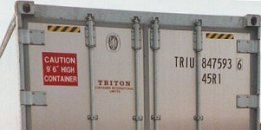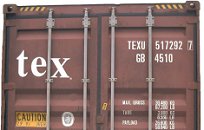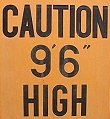The operational markings according to DIN EN ISO standard 6346, January 1996, are intended to simplify use of the container by providing additional information and warnings.
These markings also include both compulsory and optional markings. Examples of compulsory markings are those indicating gross weight and tare weight, which naturally have to agree with those on the CSC Approval Plate.
The standard prescribes the following form and sequence for marking of gross and tare weights:
 |
 |
Standard operational markings:
gross and tare weights |
 |
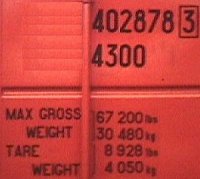 |
Non-standard operational markings:
gross and tare weights |
On this container, the minimum compulsory marking requirements are fulfilled as far as the data are concerned, but the sequence is wrong, the English customary values being given first.
It is also compulsory to affix certain warning symbols. These include pictograms for air/surface containers, the danger posed by overhead power cables and height markings for containers which are higher than 2.6 m (8'6").
All air/surface containers should carry the following pictograms:
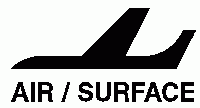 |
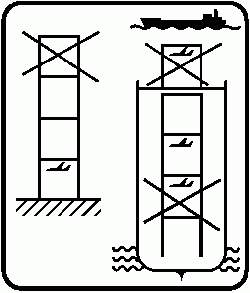 |
| To indicate that these containers have limited stackability, the symbols should be affixed where possible in the upper left-hand corner of the end and side walls and the roof. The symbol is in black. If the color of the container makes it difficult to see the symbol clearly, it should be applied to a different background of a more suitable color, preferably white. |
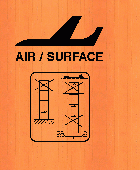 |
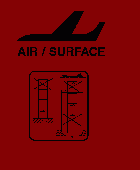 |
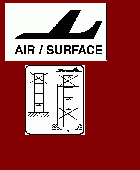 |
| Distinguishability of labels against different background colors |
According to the standard, the symbols should have the following dimensions: aircraft 130 mm (5"), stackability symbols 280 mm (11") high and 260 mm (10") high. The capital letters should be at least 80 mm (3") high.
All containers equipped with ladders must be provided with a warning symbol, which indicates the danger posed by overhead power cables.
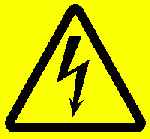 |
The height of the lightning in the warning symbol must be at least 175 mm (6.875"). The size of the warning symbol, measured between the outer edges of the black border, must be no less than 230 mm (9"). The symbol must be affixed in the vicinity of the ladder. |
Symbol warning against the danger
posed by overhead power cables |
 |
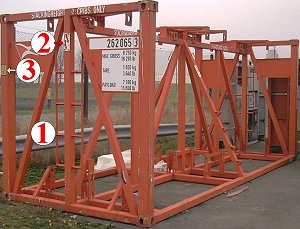 |
|
(2) = Non-standard warning symbol
|
| It is sensible to affix the lightning symbol (2) to the upper part of the ladder (1). It is not necessary, however, to affix signs (3) indicating that the container has a height of 2.6 m or 8'6". |
 |
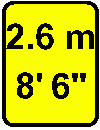 |
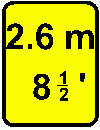 |
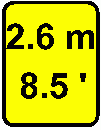 |
Different ways of writing 2.6 m and the English customary dimension |
DIN EN ISO 6346 of January 1996 stipulates that all containers higher than 2.6 m (8'6") must carry the following compulsory markings:
- a height marking on each side
- yellow and black stripes, visible at the top and side, which must be affixed in the upper part of each side and end. These must start at the corner castings and extend at least 300 mm (12").
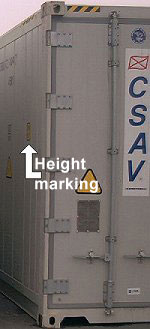 |
The height marking must be at least 155 mm high and 115 mm wide (6" x 4.5"). The characters should be as large as possible, so that they are clearly visible. The sign should be affixed at least on each side of the container, in each case in the vicinity of the right-hand edge no more than 1.2 m (4') from the top edge of the container and no more than 0.6 m (2') from the right-hand edge (beneath the identification number). |
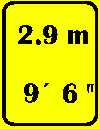 |
| Height marking for containers > 2.6 m high |
| Yellow and black stripes constitute part of the height marking |
 |
Optional markings, such as mirror images of the height marking at every suitable point (e.g. end wall), may be affixed.
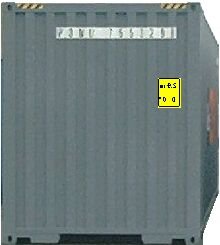 |
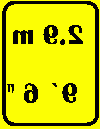 |
| Mirror image of the height marking |
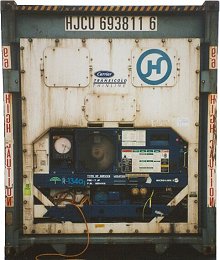 |
In mirror image:
9'6" HIGH CAUTION |
It has always been usual to mark high-cube containers with optional markings of various designs. The upper pair of images show a container marked according to the January 1996 edition of DIN EN ISO 6346, while the lower pair show a container marked according to the August 1985 edition of DIN ISO 6346.
It is always sensible to emphasize the height of individual containers, even if it doesn't always help.
 |
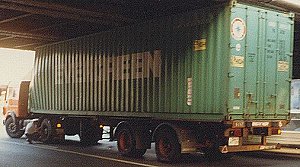 |
Height markings do have to be observed. |
One possible optional operational marking which most operators do affix states maximum payload or net cargo weight, which is the difference between the maximum gross weight and the tare weight of a container. Although this marking is optional, the standard does stipulate that the weight labeled NET be given first in kilograms and then in pounds. In general, the various markings are so arranged that the weight data are followed by container volume data.
 |
 |
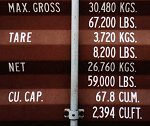 |
| Weight and volume markings on 40' containers |
 |
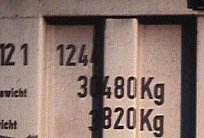 |
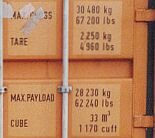 |
| |
Partially hidden or covered weight and volume data |
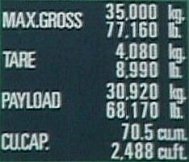 |
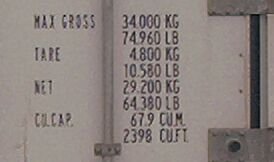 |
| The maximum gross weight may well deviate from the standard values. |
| M.G.W. = Maximum Gross Weight .... and in Chinese characters too |
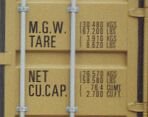 |
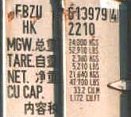 |
|



















